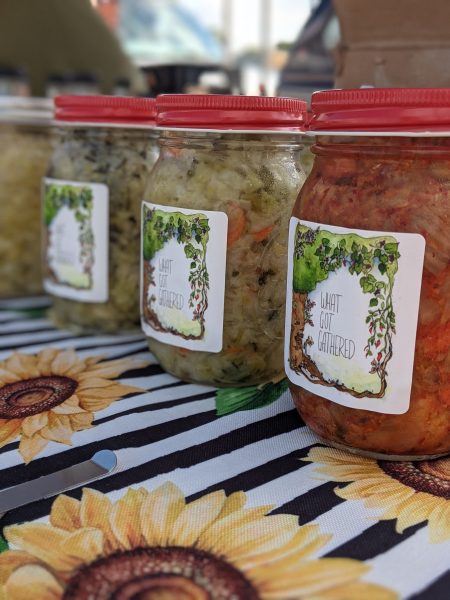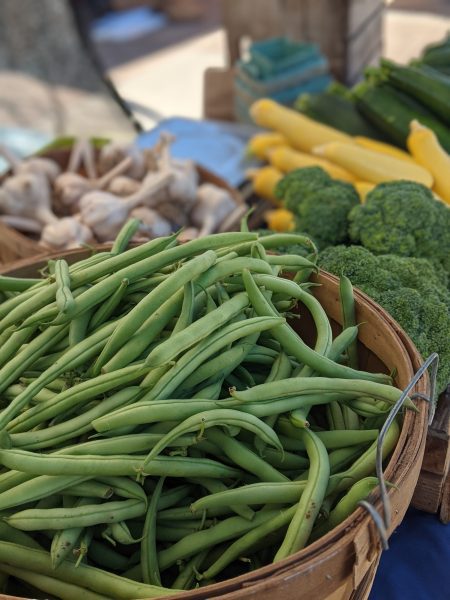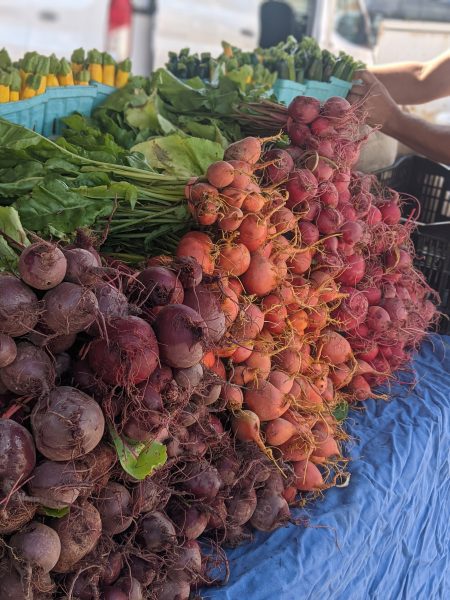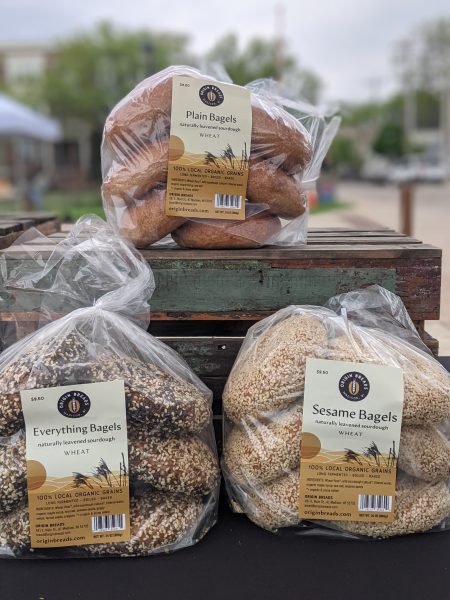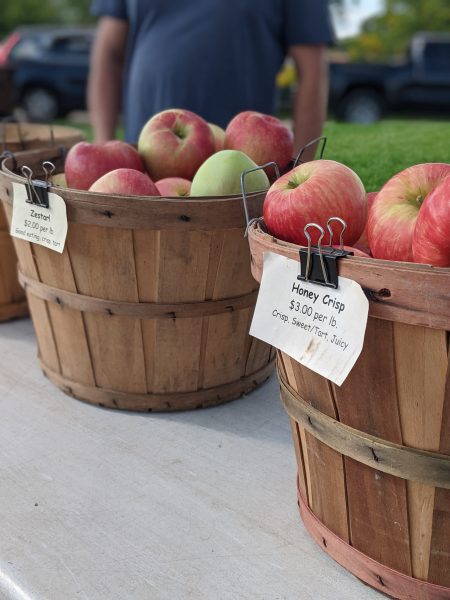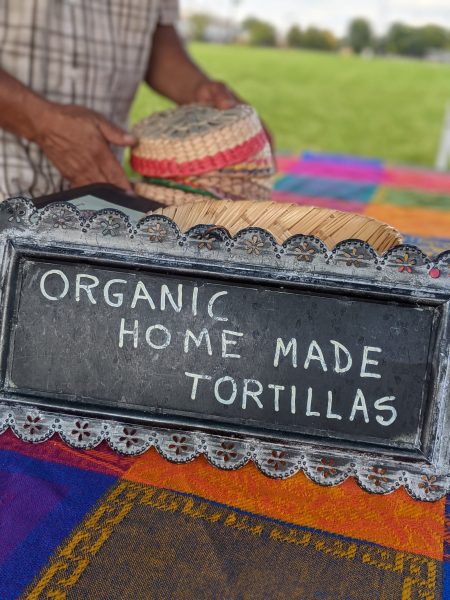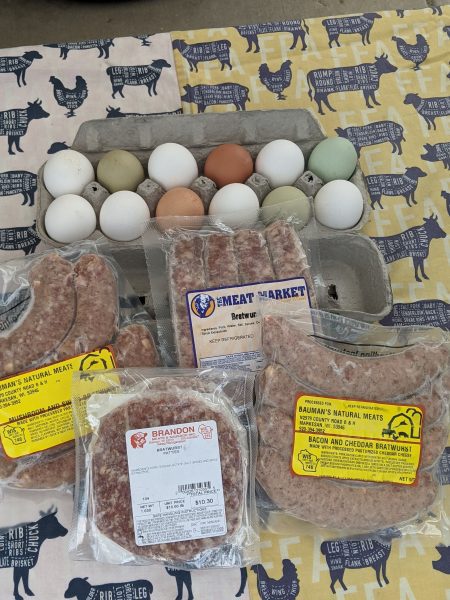Eat with the environment in mind
Jordyn Crane, RDN, Health Programs Coordinator
Nutrition is about more than how foods nourish our bodies – we also believe nutrition is how we sustainably nourish the environment and our communities. So, what does it mean to eat with the environment in mind? We encourage you to try and find one new way to eat with the environment in mind this month in honor of National Nutrition Month 2023!
Here are a few ideas that we’ve come up with:
1. Choose what’s in season, when you can
By choosing seasonal produce, you’ll get fresher, tastier, and more nutritious foods that can even support your wallet. Produce is more expensive in its off-season because it costs more to import it from regions of the country/world where production can happen year-round. When you buy what’s in season locally, you’re getting food that is at the peak of its supply, so it costs less to get it to you, doesn’t spoil along the way, and has the highest nutritional value possible!
With Second Harvest’s Farm to Foodbank Initiative, we are dedicated to buying seasonally and locally to provide our community with the freshest, tastiest, and more nutritious foods our region has to offer! This allows us to stretch our donor dollars, support our local farming communities and ensure that all our neighbors have consistent access to the fresh produce, eggs, and dairy that is grown and produced right here in southwestern Wisconsin!
Not sure what’s in season in Wisconsin? Check out UW-Extension’s Seasonal Produce Guide.
2. Shop locally
One of the best ways to find what’s in season is to swing by one of your local farmer’s markets! Spring is RIGHT around the corner and that means that farmers across Wisconsin are busy preparing for this year’s market season.
Did you know that many farmer’s markets in our service area accept FoodShare/EBT, WIC, and Senior Farmers Market Nutrition Vouchers? Check out this link to find a farmers market that accepts these programs in your community: Farm Fresh Atlas
During peak market season, bring your Quest Card (FoodShare/EBT card) to Madison-area farmers markets and you can even DOUBLE your DOLLAR! Visit the market’s information booth to get $25 additional dollars to spend on Wisconsin-grown products at participating farmer’s markets. See the list of participating markets here.
Curious if you’re eligible for FoodShare? Reach out to a FoodShare Outreach Specialist today to talk through any questions you have!
Not able to make it to market? No problem! Many local farmers and producers offer a way for you to get a weekly, bi-weekly or monthly box of their seasonal goods called a CSA (Community Supported Agriculture) box. FairShare CSA Coalition offers cost assistance opportunities for folx who qualify. You can even purchase a CSA with your FoodShare/EBT/SNAP benefits! Find your local CSA farmer here and know you’re not only nourishing your body and stretching your food dollar, but you’ll also be nourishing your local community!
3. Start a garden
One fun, easy, and small way you can eat with the environment in mind is to give your green thumb a try and try growing something of your own. It doesn’t have to be big, or fancy; start small and see what happens!? Here is a simple, fun activity to grow microgreens in your window: https://www.gardeners.com/how-to/grow-microgreens/7987.html
If you live in the Madison area, swing by the Madison Public Library to browse their seed library. You can borrow some seeds for FREE and check out a gardening book while you’re there!
Ready to take it to the next level? Contact your local master gardener for tips and tricks on mastering your gardening skills.
Do you have more produce than you or your family or neighbors can handle? Consider donating to your area food pantry! Second Harvest partner food pantries are happy to accept your delicious, home-grown produce!
Small starts lead to great impacts and we are grateful to the large and small farmers who provide food to our communities. Check out the impact of our local Madison Area Food Pantry Gardens here.
4. Enjoy more plant-based meals
We LOVE beans, peas, and lentils here at Second Harvest (ok, well at least I do)! These small but mighty pulses are nutrient-dense powerhouses and can be enjoyed in so many different ways!
Pulses are the edible seeds of plants in the legume family. Pulses grow in pods and come in a variety of shapes, sizes, and colors. The United Nations Food and Agriculture Organization (FAO) recognizes 11 types of pulses: dry beans, dry broad beans, dry peas, chickpeas, cow peas, pigeon peas, lentils, Bambara beans, vetches, and lupins. Pulses have a rich history and are a nutritious staple of diets around the world. Not only are they a nourishing and inexpensive source of protein, vitamins, and fiber; but growing pulses also supports the environment! Pulse crops decrease greenhouse gases and increase soil health by absorbing nitrogen right from the air and they also require much less water than other crops to grow! Win for your health and win for the environment!
Looking for a new way to try pulses?! Check out this robust resource of diverse pulse recipes.
Share your favorite ways to cook and enjoy pulses here!
5. Advocate for nutrition security
Eating with the environment in mind can mean looking at our policies today and wanting something better for future generations. Our mission is to end hunger in Southwestern Wisconsin with the goals of nutrition security and food equity for all our neighbors. We can’t achieve this mission alone, and you can play a significant role by using your voice and engaging your community leaders to support efforts toward advancing nutrition security.
Research continues to show that constituent contacts at state and federal offices are the key drivers of policy decisions. Often, as little as a few calls from voters on an issue can make a legislator change their mind.
Curious about what’s happening in public policy? Visit Feeding Wisconsin’s Hunger Action Center: https://www.feedingwi.org/publicpolicy/advocacy/
Vote your Voice: make sure your voice is heard! Register to vote if you can or engage in voter registration efforts if you cannot.

